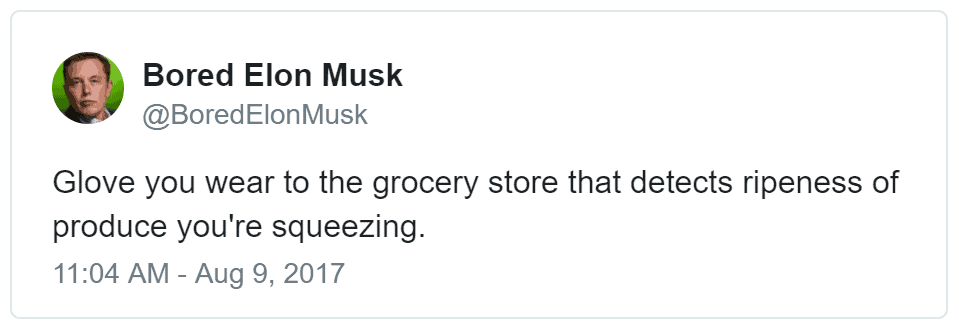You Have A Business Idea, Great!
Is it a good idea? This is a question that you should try to answer before you even start investing your time and money. Many entrepreneurs build startups that fail and solutions that address problems that do no plague their target audience. Although we cannot avoid failure completely, we can try to avoid common pitfalls.

The Prerequisites
Passion
You’ll need a lot of this to get started. Most of you have heard of Angela Duckworth’s book on “Grit” where she purports that the willingness to keep pushing (“grit”) no matter what is a key factor in success. Similarly, Steve Jobs said that you must have passion to succeed. Otherwise, a sane and logical person would just give up. However, is love for vision all it takes?
Passion and motivation is not enough. Just because you love something so much, doesn’t mean you’ll be successful (in the sense that you will sell a lot and get rich). Personally, I love music. So much so that I even majored in it in college. However, that doesn’t mean that I would succeed in music. Far from it, actually.
Value
A successful idea is a product that brings value. In Richard St. John’s TED talk on the secrets of success, he said, “You can’t serve yourself; you’ve got to serve others something of value. Because that’s the way people really get rich.”
Be careful not to fall into the line of thinking that value is generated by spending hours, days, months, and years on a product. The truth of the matter is that a product has value only if people other than yourself value it. Even though I value my music, if others don’t value my singing, it has no true value.
So, if you want to make something, you need to first know if others value it.
What Is Value?
Every successful product is a solution to a problem that is widespread. The telephone, internet, email, social media, and messaging apps help us stay connected instantly. Cars, planes, and boats help us get around more efficiently. The computer or the smartphone you are using now helps you get access to content faster than visiting a library and faster than any book or newspaper can be printed.
Of course I can go on and on, but my point boils down to this: people value their time. If there is something that solves a problem that gives them more of it–by replacing a time-staking task or overhead–it will bring them value.
Does your startup idea make a product that solves a problem that exists for people other than yourself? Do others when faced with this same problem are willing to pay to solve it?
Simple Way To See If Others Value Your Product
Of course you can simply talk to others. In fact, you should. From the very beginning, you are doing yourself a disservice if you do not talk to others to see if they have the same problems and pain points that your product is trying to solve.
However, the quickest way that I have found to check the market and need for a product idea is by using simple keyword research tools.
If you have a Google AdWords account, you can use their Keyword Planner to check if people are searching for your product. If you don’t, no worries because we got you covered.
Here’s How To Do It
For our demonstration purposes, we will use Twinword Ideas. Unlike AdWords, no account is needed and it’s free.
Let’s take the idea of a “glove you wear to the grocery store that detects ripeness of produce you’re squeezing.” This is taken from Bored Elon Musk’s Twitter page, a place where random ideas are posted.

- First, put yourself in the shoes of your target audience, people who you think need your product. In this case, people who want to eat fruit, but do not know how to pick fruit.
- Think about what your customers would search for on Google if they did not know your product, but faced the problem your product is solving. What would they search for? With our example, search terms could be “how to tell if a watermelon is good” or “how to pick fruit.” Make a sizable list of possible search terms.
- Go to Twinword Ideas Import tab. Copy and paste your list of search terms into the box and click analyze.
- In the results list with statistics, look at the statistics column called “Search” which is short for search volume. This is the number of searches on average per month over the past 12 months that people have used that exact search term in Google.
- Try variations that you haven’t thought of. Head over to the Suggest tab to find other keywords and their search volumes.
After seeing the search volume statistics, you can get a pretty good feel for whether your customers exists or not. If a lot of people are looking for a solution like your product and non exists already, its time to move onto the next step.
Marketing Your Idea
If your idea checks out, you’ll need a name. Creating names is no easy task. There are many tools like NameMesh that can help you come up with names that at the same time are available domain names. If you are loo
rt. They use AI technology to help you generate a bunch of unique and cool-looking logos in seconds.
Keep in mind, your name and brand should help deliver the message of your product’s value. That is where I leave you with the following image.

(Image credit: UserOnboard)
Don’t waste your time and effort on something that others won’t want. Make sure to do your research.
If you need more help with coming up with a name, the people over at Logojoy in the naming business also wrote a post to get you started on how to come up with a catchy and creative business name.



